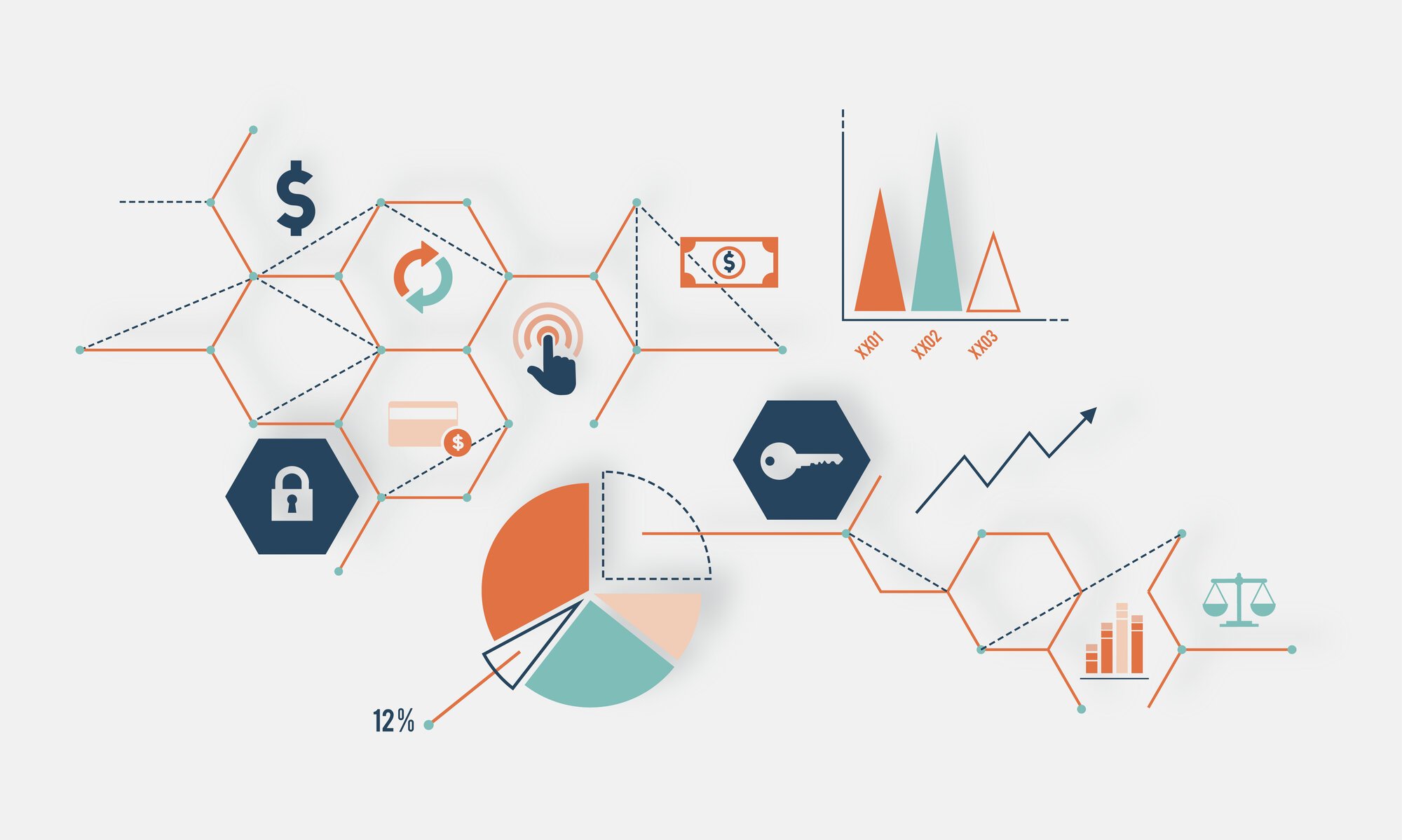AI in data analysis for marketing strategies: Tips and approaches for application in 2024

Reading time:
minutes
Artificial intelligence (AI) continues to play a transformative role in the development of marketing strategies, particularly in data analysis. In 2024, marketers who use AI will be able to gain deeper insights, make more informed decisions, and improve customer engagement.
Tip 1: Use AI for an in-depth analysis of your target group

AI enables you to analyze your target audience's data with unprecedented precision by revealing customer preferences, demographics, and behavior. This helps marketers better segment their target audiences and develop personalized campaigns.
- Precise segmentation: AI can analyze the behavior and preferences of your target audience and help you create more precise segments. This leads to better targeting accuracy.
- Campaign personalization: AI can be used to tailor advertising content and offers more effectively to the needs of each segment.
- Multisource analysis: AI tools such as Google Cloud AI or Azure Machine Learning help to consolidate data from various sources and obtain a comprehensive picture of the target group.
Example: Spotify uses AI to analyze its users' listening habits and creates personalized playlists that increase user engagement.
Approach to implementation: Start by using platforms that consolidate data from various sources, such as customer data platforms (CDPs). Tools such as Segment and HubSpot help you collect customer data in one place. Use AI to segment your target groups based on behavioral and demographic data, enabling you to create more accurate and effective marketing offers. Implement automatic recommendations based on data analysis to improve the targeting and personalization of your campaigns.
Tip 2: Use machine learning to predict customer needs

Machine learning (ML) makes it possible to predict customer behavior and needs based on historical data. This significantly improves the planning of marketing campaigns and helps to identify early on which products or services will be in demand. Sephora, for example, uses AI to analyze its customers' purchasing habits, resulting in more targeted product recommendations and a higher conversion rate.
Approach to implementation: Use ML algorithms, such as those integrated into platforms like Salesforce Einstein or IBM Watson, to predict customer needs. These systems analyze purchase histories, behavioral data, and customer preferences to make predictions. Use tools such as Marketo or Pardot to configure trigger campaigns based on these predictions and automatically deliver relevant offers at the optimal time. Also, be sure to use AI to predict customer churn in order to create preventive customer retention campaigns.
Tip 3: Automate your data analysis processes

AI helps automate labor-intensive data analysis tasks, such as generating reports and identifying trends. This allows marketers to focus on strategic tasks rather than routine ones. Google Analytics 4, for example, offers automatic detection of important trends and helps marketers make informed decisions faster. Anodot is another powerful tool that uses AI to monitor data in real time and detect anomalies that can influence marketing-related decisions.
Approach to implementation: Connect AI tools to your existing analytics platforms, such as Google Analytics 4 or Adobe Analytics. These platforms help you automate the process of reporting and trend analysis. Use solutions such as Anodot or Looker, which enable real-time data analysis and identify anomalies. This allows you to respond immediately to changes and adjust your marketing strategy.
Tip 4: Optimize budgets and media planning with the help of AI

One of the biggest advantages of AI is its ability to optimize advertising budgets and media planning. AI helps analyze the effectiveness of different advertising channels and automatically reallocate budgets to maximize return on investment. Unilever, for example, uses AI to analyze the performance of its media channels, enabling the company to efficiently shift budgets in real time and reduce costs.
Approach to implementation: Use tools such as Adobe Advertising Cloud or Smartly.io to automate media planning. These platforms automatically analyze the performance of your campaigns and adjust the media plan in real time. Tools such as Madgicx and Kenshoo help you predict the ROI (return on investment) of your advertising campaigns, allowing you to allocate your budgets more accurately and avoid unnecessary spending on inefficient channels. It is important to continuously monitor advertising campaigns and optimize strategies based on their efficiency.
Tip 5: Improve content marketing with AI

AI can significantly improve content marketing by analyzing which content generates the most engagement and helping you create content that resonates better with your target audience. For example, The Washington Post uses AI to analyze article performance and optimize content based on reader interests. Analytics tools such as BuzzSumo and Crimson Hexagon help marketers understand which topics and formats work best.
Approach to implementation: Use AI tools to analyze and optimize content. Platforms such as BuzzSumo or Frase.io help you identify content that generates the most engagement and offer suggestions on how to improve it. Use AI-powered tools such as Jasper AI to create text-based content tailored to your target audience and relevant keywords. This speeds up the content marketing process and improves the relevance of your content. Don't forget to integrate AI tools for SEO optimization, such as Surfer SEO, to improve your content's ranking in search engines.
Conclusion
In 2024, AI will remain a key tool for analyzing data in marketing strategies. By using AI, marketers can not only better understand their target groups, but also predict customer behavior, automate processes, and optimize budgets. AI-powered tools help marketers make more informed decisions and launch more efficient campaigns, making them an indispensable part of modern marketing strategies.



